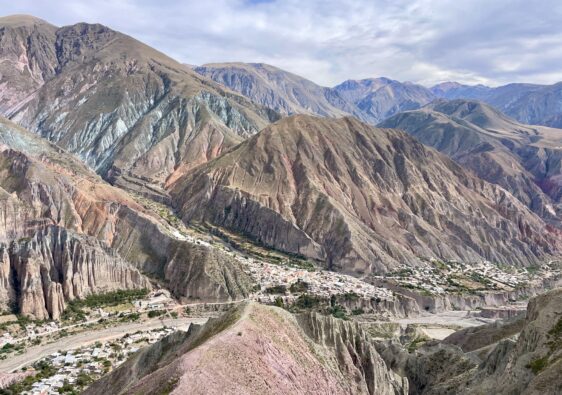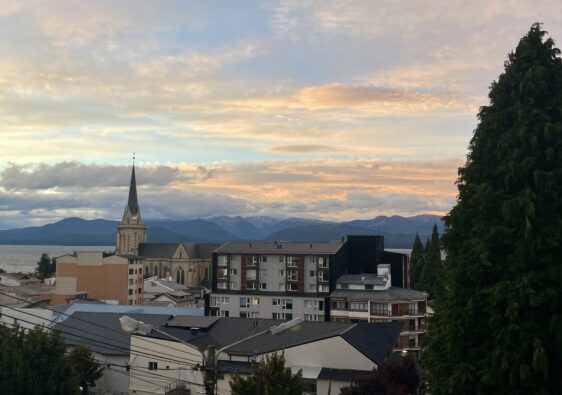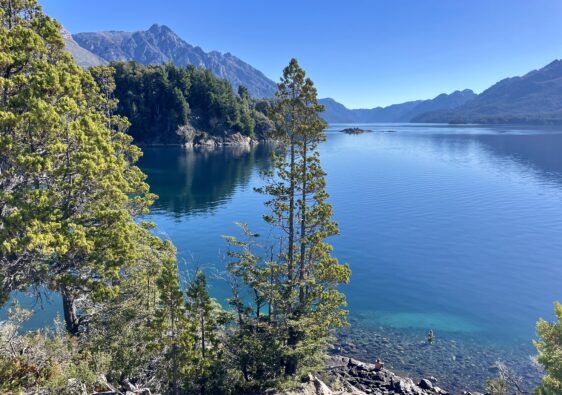Travel Guide for Quebrada de Las Tres Señoritas
The Quebrada de Las Tres Señoritas and Cañón de Las 13 Vueltas are absolutely stunning. The English translation of these are the “Mountain Range of The Three Young Ladies” and “Canyon of the 13 Turns”.
This hike is overshadowed by the spectacular Salinas Grandes and Rainbow Mountain in Jujuy, but it is certainly not to be missed. The Quebrada de Las Tres Señoritas is a multicolor mountain range surrounded in a desert climate. There are caves, ravines, amazing panoramic views and more! The Cañón de las 13 Vueltas is a canyon with a path that snakes through towering red rock cliffs.
If you like the United States’ Southwest, you’ll LOVE this hike and all of Jujuy. Let’s get into how to visit the Quebrada de Las Tres Señoritas and Cañón de las 13 Vueltas!
Please note that some of the links below may be affiliate links, and at no additional cost to you, we earn a commission if you make a purchase.
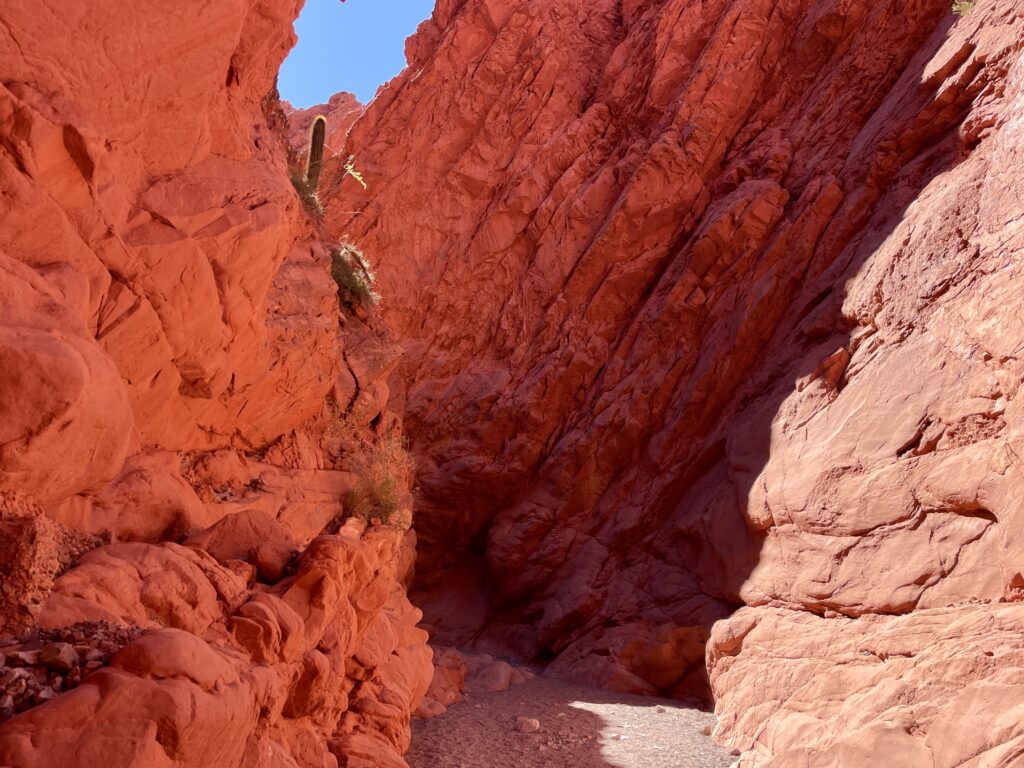
Things to Know Before the Quebrada de Las Tres Señoritas and Cañón de las 13 Vueltas Hike
- This is a very sacred, religious, and spiritual area. If you don’t speak Spanish, make sure to thoroughly read our full description of the hike below.
- Guides are mandatory, but very cheap
- The tours leave every 30-40 minutes or once the group fills up.
- You can leave bigger bags in the office during your hike.
- There’s a police officer stationed here so it’s safe to park/leave bigger bags in the office.
- Lo de Chari restaurant is an amazing place to stop pre or post-hike for healthy juices, veggie tarts / quiche-like dishes and delicious vegan empanadas.
- Make sure to bring a lot of water and wear sunscreen! This is the desert, and you’ll be exposed to the sun most of the time.
- There’s a free bathroom at the trailhead parking lot
- Tilcara is a great place for basing yourself to explore the surrounding areas, such as this hike, the Salinas Grandes, and the Rainbow Mountain!
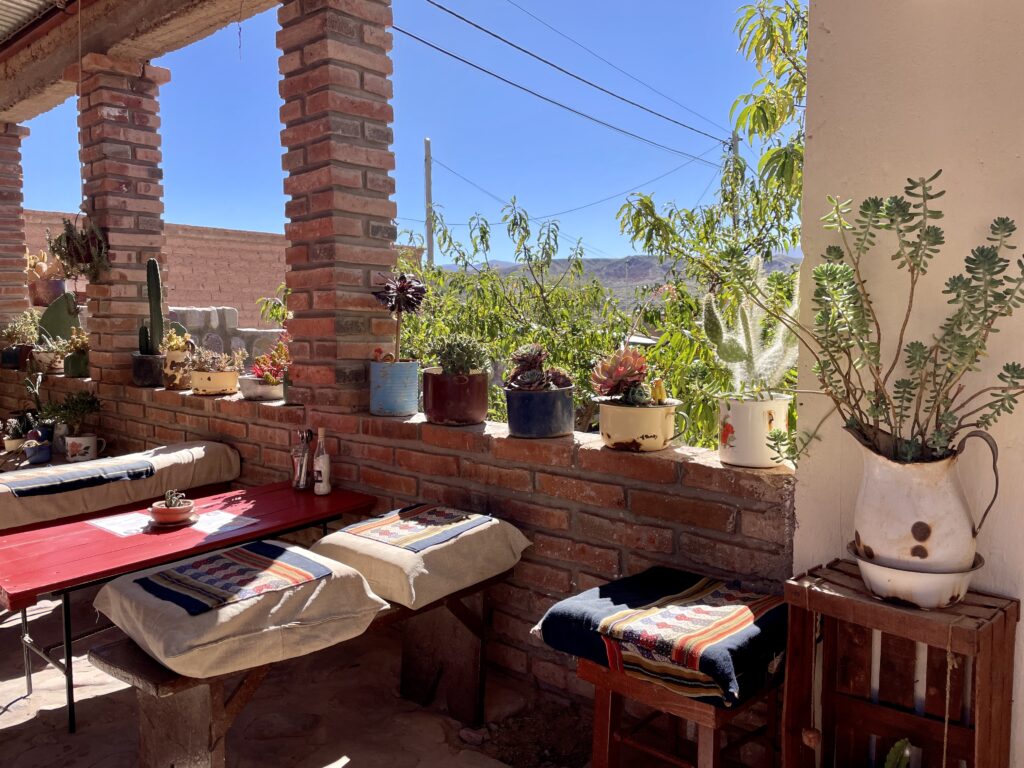
Hike Difficulty, Time, and Cost
There are two tours, the short tour and the long tour. The short tour includes Cañón de las 13 vueltas, amphitheater, and panoramic viewpoints and takes 1.5 hours, and costs $3 + $1 entry. The long tour includes everything the short tour has plus cerro de ls tres señoritas and cueva de las señoritas. This takes 3 hours and costs $5 + $1 entry.
The hike is more of a walk, and you only go uphill on the long tour at the very end. It isn’t very strenuous, but a lot of it was in the sun so you’ll definitely get hot.
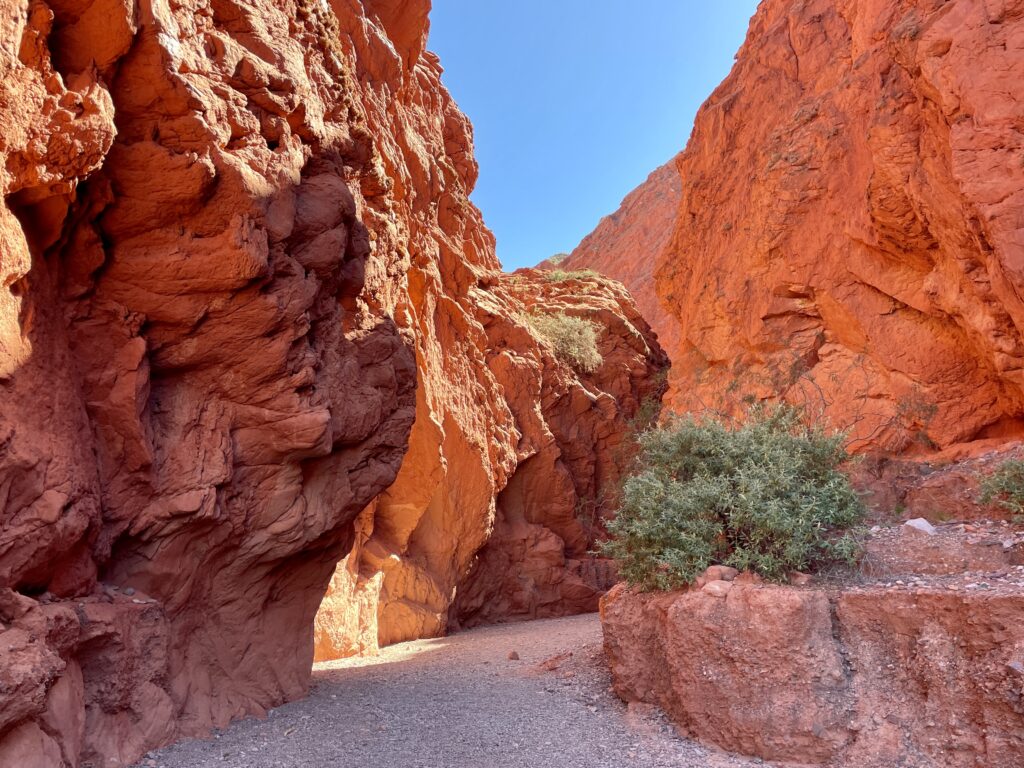
How to Get to the Quebrada de Las Tres Señoritas
To buy bus tickets in the Jujuy region, you have to go to the bus station a few minutes before the bus leaves and buy tickets from the various stands. The Quebrada de Las Tres Señoritas is located on the outskirts of Uquia, a very small town in Jujuy. The bus stops on the main highway; from there, it’s a 15-20 minute walk to the Quebrada de Las Tres Señoritas trailhead.
How to Get to the Quebrada de Las Tres Señoritas by Bus
From the Tilcara Bus Station, take the bus heading to Humahuaca and get off in Uquia. Cost is around $2 and this takes around 30 minutes.
From the Purmamarca Bus Station, take the bus to Humahuaca, and then get off in Uquia, which costs around $4 and takes almost an hour.
From the Humahuaca Bus Station, take the bus heading to Tilcara and get off in Uquia. Cost is around $2 and this takes about 20 minutes.
How to Get to the Quebrada de Las Tres Señoritas by Car
For those planning on driving, put “Comienza Quebrada de Las Tres Señoritas” into Google Maps. The gravel road is decent and you don’t need a 4×4. There is a big parking lot at the trailhead.
To explore the Jujuy region of Argentina with freedom and flexibility, we recommend renting a car in Salta using this service.
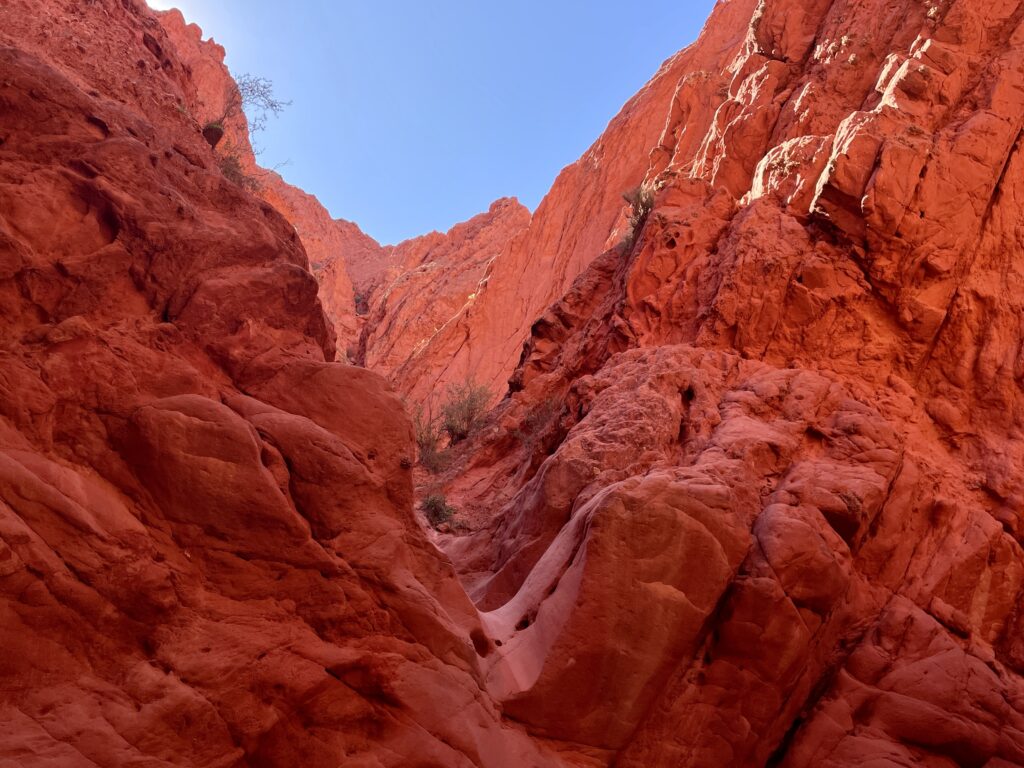
Why is it Called the Quebrada de Las Tres Señoritas?
The Quebrada de Los Tres Señoritas, or “Mountains of the Three Young ladies” has a legend associated with it. There’s a white part, black part, and red part to these mountains. HOWEVER, these three colors are NOT representative of the three young ladies.
The legend is that three virgin ladies went to an empty area (before the mountains is existed) and gave an offering of gold to Pachamama, or Mother Earth. In response, Pachamama created the three mountains. The white part represents the virginity of the three ladies, the black part represents the Spanish conquest, and the red part represents the blood of Pachamama. The gold offered to Pachamama as well as the three ladies were never found.

Quebrada de Las Tres Señoritas Full Description and Itinerary
Because the guided tours are only in Spanish, we’ll translate the major things the tours go over. When the guide speaks, you can just nod your head and agree! If you do speak Spanish, this section will still give you a good idea of what to expect!
Moon Lookout & Offering to Pachamama
On both the short and long tour, you start by admiring the views from the “Moon Lookout”. It’s called the Moon Lookout because once a year the moon and sun line up perfectly through this inverted arch.
You’ll descend for a few minutes, and the guide will point to a pile of rocks. This is where you’ll ask “Pachamama” or “Mother Earth” permission to enter, and leave a rock and make a wish. The bigger the rock, the more likely the wish is to come true!
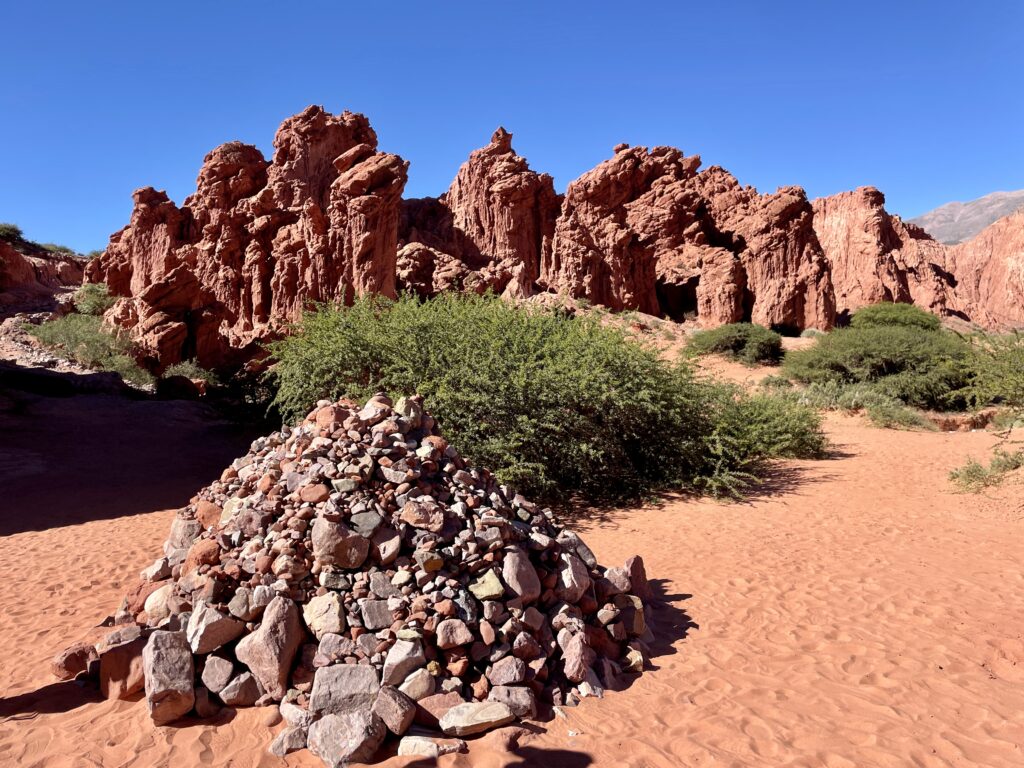
Plants
The guide will point out a few plants and briefly discuss them. There’s a massive cactus that is a special, protected species, that has fruits that people used to eat. The guide will also point out a a smaller cactus, which you can see decaying due to some sort of parasitical larvae that eats away at the cactus’s wood. There’s a plant that produces a pink pepper spice, and you’ll roll it between your hands and smell it. Another plant you’ll admire is a type of mint that is commonly used in Mate, the famous South American tea. It’s also used as a cure to various illnesses and serves as a natural laxative.
Canyon of 13 Turns
Then you’ll enter the Canyon of 13 Turns. The guides are amazing photographers and there will be two photo opps here. One at one of the first turns, and one at the amphitheater. The amphitheater is where the trip to the Canyon of 13 turns ends. The amphitheater isn’t that impressive, but the guide may mention that there used to be a waterfall here, but they built a dam so that tourists could enter the marvelous canyons.
After the Canyon of 13 Turns, you’ll either continue if you’re doing the long tour, or turn back if you’re doing the short tour.
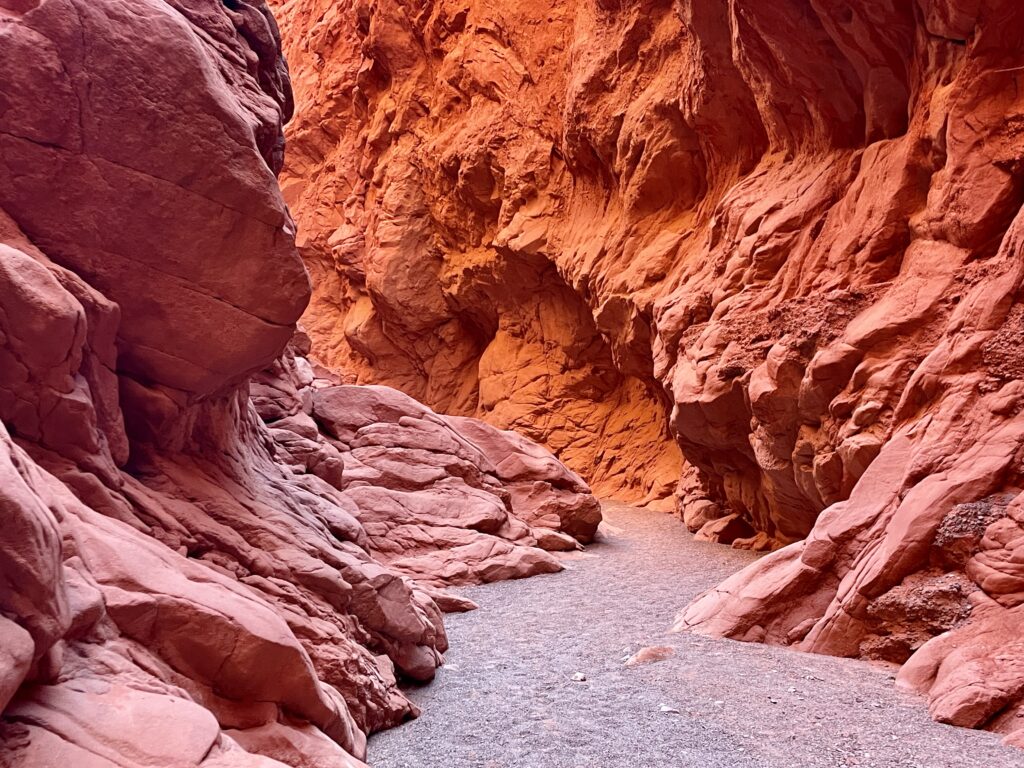
Ruins
On the long tour, you’ll pass by some rubble and what looks like a half built well. The half built well is actually a tomb! The guide will explain to you that the Uquia Indigenous people didn’t look at death like we do now. They believed their souls kept on living, so they chose to keep them close to their home. When they built tombs away from the homes, they also tried to build them as high up as possible so they could be close to the skies.
Quebrada de Los Tres Señoritas
The Quebrada de Los Tres Señoritas is absolutely stunning. The guide will explain the story in the above section, and maybe (rightfully) talk about how bad the Spanish conquistadors were.
You’ll continue hiking through a ravine, stopping in the shade at parts for water breaks. There is one side trek where you’ll go up to see a better view of the white part of the mountains. The guide will also explain the texture of most of the red rocks is not very solid, it’s just super compressed sand.
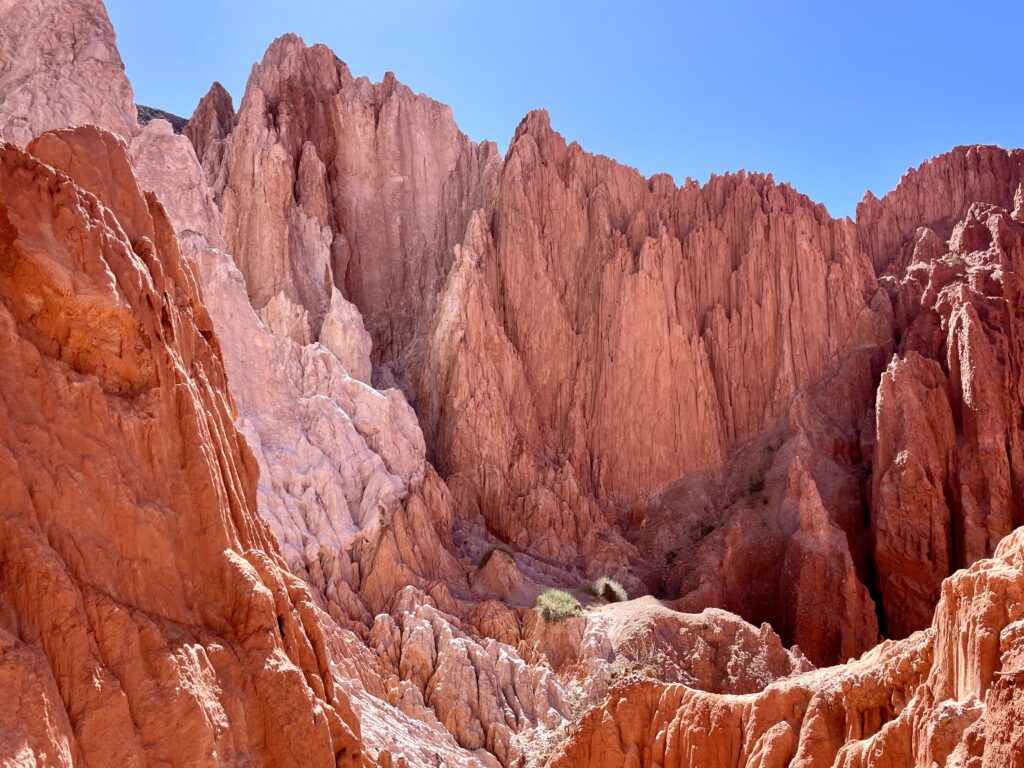
After doubling back to the ravine, you’ll continue up until you get to a very narrow cave passage. It lasts around 50 meters, and while it doesn’t require any crawling, this isn’t a great place if you’re claustrophobic! This is the last thing you do before heading back.
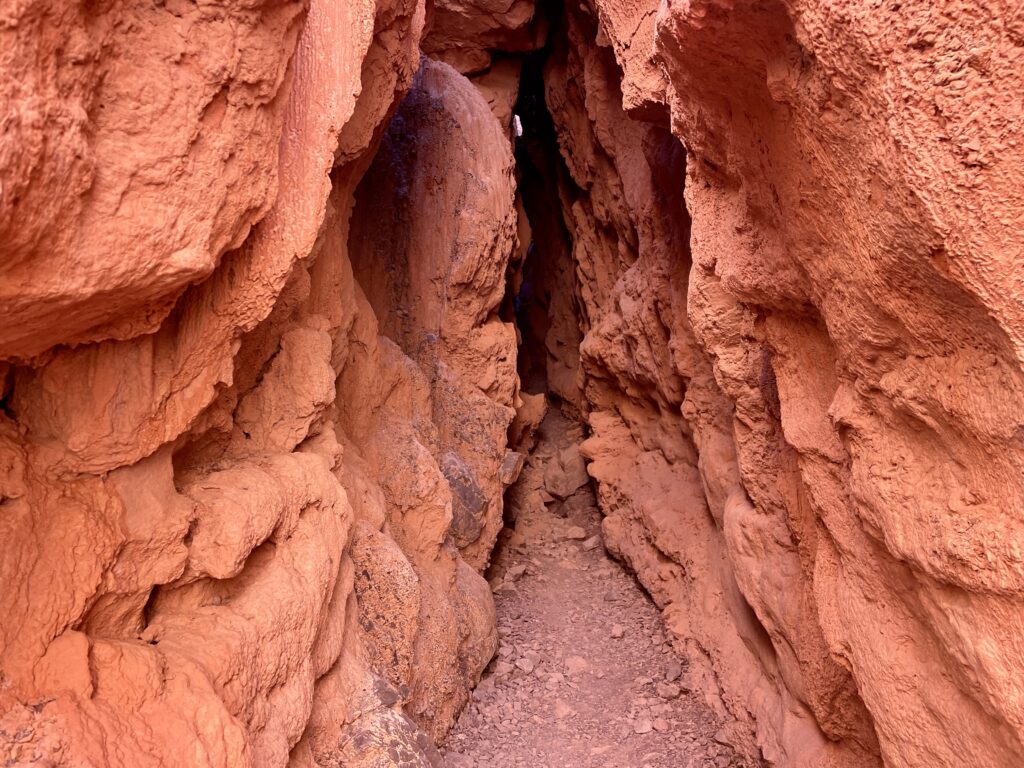
Leaving
On the way out, you’ll see the same pile of rocks that you added one to on the way in, and with two hands, you’ll pour water onto the rocks as a gesture of thanks to Pachamama.
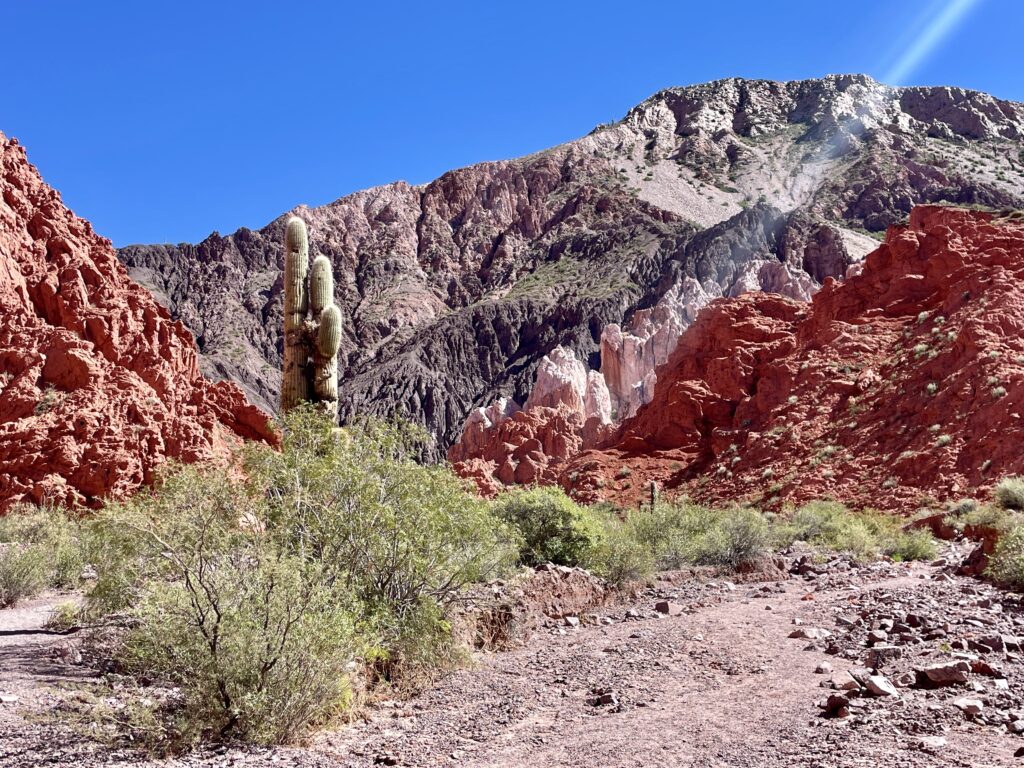
Keep Exploring Jujuy…
- How to Visit the Argentina’s Rainbow Mountain (Mountain of 14 Colors)
- How to Visit Salinas Grandes: Argentina’s Salt Flats
- The Most Amazing Things to do in Tilcara and Jujuy, Argentina
Our Favorite Travel Resources
Accommodations: We use Booking.com for hotels and HostelWorld for hostels. We also use VRBO or TrustedHousesitters for longer stays.
Flights: We recommend using Skyscanner to find the cheapest and best flights.
Ground Transport: We use 12Go and Omio for buses and private transfers, and rentalcars.com and Discover Cars for rental cars.
Activities: GetYourGuide and Viator are the best websites for booking organized tours.
International Medical Insurance: We highly recommend SafetyWing for Digital Nomads and HeyMondo for those not traveling full-time, or who frequently engage in higher-risk adventure activities.
eSIM: We recommend Airalo or Holafly for getting data internationally.
Check out our Travel Resources Page for more of our favorite travel-related products and services!

